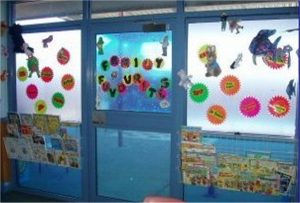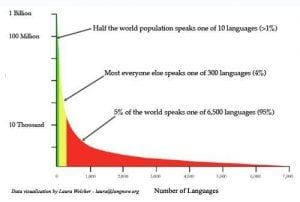
Recently there was a request to a network I belong to seeking advice about placing a popular series of books on the shelves, a series that was one of several of its type which started as a successful movie franchise and forty years on remains as popular now as it was when it was first released. In fact many who enjoyed it as children are now sharing it with their own children. But there was a strong between-the-lines implication that because it was a movie tie-in it didn’t have literary merit and therefore didn’t have a place on the school library’s shelves.
In some respects, this was a view I held years ago when I first started reviewing books for the very young on my blog The Bottom Shelf. I was inundated with books relating to television characters and was reluctant to review them because I couldn’t relate to the characters and I didn’t want to encourage anymore screen-time than children already had. But then one day in a chain store I saw a little one pounce on a book featuring a well-know show here and the delight she demonstrated and the nagging and pestering she did to own it, with no regard for the other toys on display, changed my mind entirely. If a familiar character was going to be the “in” to reading for a three year old, then I would review them and let parents know about them.
In hindsight, I don’t know why I objected so strongly because I certainly had a dedicated space in my school library for “Family Favourites” based on the familiar characters of preschool programs in the belief that seeing them would help with the transition from preschool to ‘big’ school, and my collection and display of the Goosebumps series was definitely the instigator of reading in so many young boys of the time.

Family Favourites
The Long Tail is used in many fields to describe a statistical phenomenon that is best described with this diagram…
In libraries, the term refers to all those potential patrons that a library has but who don’t use the facility because they don’t believe it has anything to offer them. Whether they are non-readers or reluctant readers or accomplished readers who prefer a certain subject, they perceive that the library is not somewhere that would cater for their needs and no amount of advertising the general collection (in whatever format) persuades them. They might even be those who remember an unfriendly librarian, environment or experience from childhood and at that early stage decided there were better places to be.
The term Library 2.0 is also one that has been bandied about over the last decade and it refers to the changing model of the library to one that is user-centred rather than librarian-driven. It encourages patrons to have a say in what they want and need in regards to both the collection and the services so that what is offered is relevant to those who are using them.
But, regardless of the efforts made to change what is offered and how we offer it, there will still be the long tail who have the belief or attitude that they and libraries are not compatible.
No matter how hard we try, many of the services we offer are not being used by a majority of our population. It’s never been easy to reach this group with physical services, because libraries are constrained by space and money and cannot carry every item that every user desires.
I believe that we have a responsibility to reach out to these people, investigate what it is they are interested in and seek to provide it if possible. This is much easier in the school setting than the public library because the audience is somewhat “captive and contained” and we, as the person responsible for developing the collection and the services, should be pro-active in discovering needs and interests. Don’t wait for them to come with requests – they won’t do that if they’ve developed an anti-library attitude. This is particularly important if we are to satisfy the Students’ Bill of Rights that underpins our professional practice.
The Australian School Library Association’s School Library Bill of Rights lays down the basic tenets for collection development including
To place principle above personal opinion and reason above prejudice in the selection of materials of the highest quality in order to assure a comprehensive collection appropriate to the users of the library.
So even if we would prefer all our offerings to have “literary merit” or being relevant to the curriculum or whatever other restraints we impose on it, we need to consider those whose library experiences needs to be a little less highbrow and a lot more enjoyable.
As the Australian school year draws to a close and plans are being made for 2018, perhaps it is timely to consider how the long tail might be at the forefront of the strategic development plan including how their needs can be determined. It is not enough to place a suggestions box on the circulation desk or conduct a survey of current library users because that will only lead to offering what we always have, doing what we’ve always done and marginalising those potential users even further. It means thinking of who our target clientele might be, even if that’s a small, specific group to start with and then talking directly to them to discover how they believe the library could be more relevant to them. It means looking at new ways of promoting new services and resources well beyond the library walls and demonstrating that we are listening and then acting on what we hear.
With advocacy for maintaining and expanding library services still being such a critical part of our role, explicitly focusing on the long tail and deliberately addressing their needs rather than hoping some sort of osmosis will bring them through the doors may be the key to giving your facility a new lease of life and a promising future.


Thanks for the interesting and once again timely read in these unprecedented times. I have just recently been introduced to your professional Readings and so many resonate with my philosophy as an educator. I keep thinking about how to collaborate with the departments who don’t see libraries as relevant. This is a reminder to keep being tenacious and yes equality for all our learners